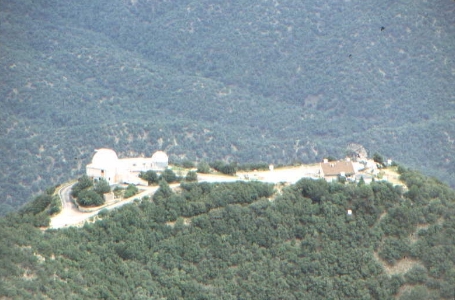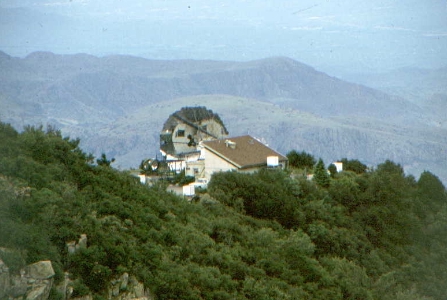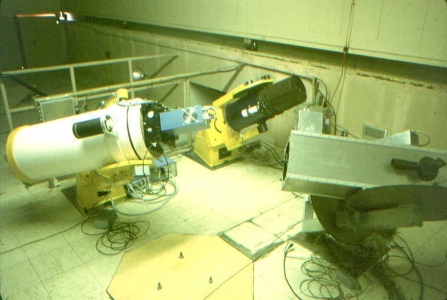

Along with the MMT, the facilities operated by the Harvard-Smithsonian Center for Astrophysics on Mt. Hopkins comprise the Fred Lawrence Whipple Observatory. The 1.5-m Tillenghast reflector, in the largest dome of the building shown above, was the backbone of the CfA redshift surveys. Word has it that it was built using some very creative accounting to deal with what the Smithsonian could and could not do with surplus property...
This was also one of the first locations for ground-based detection of high-energy gamma rays via atmospheric Cerenkov emission. As they used to day at AAS meetings about gamma-ray astronomy, "One is a detection, two is a discovery, three is the Rossi prize". These observations use huge light-bucket reflectors, where image quality isn't an issue because one needs a 1-degree field for the high-speed photomultipliers anyway. The 10-meter mosaic shown below was used for several historic detections, including TeV emission from Markarian 421.

For several years, Mt. Hopkiins also hosted a farm of automatic photometric telescopes, some of the first successful robotic instruments. (They've since taken up residence, with some larger 0.8-m relatives, at Washington Camp to the southeast near Nogales). The heritage of these instruments traces back to garages in Ohio, with Lou Boyd and Russ Genet. This view shows the early 10- and 16-inch APTs ready to check for clouds as soon as the roof opens.

Last changes: 02/2001 © 2001